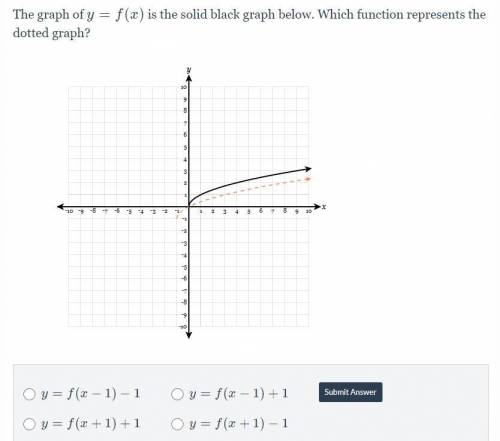
Mathematics, 16.04.2021 21:20 wendhycardenas2019
Transformations of Functions (A1)
The graph of y=f(x) is the solid black graph below. Which function represents the dotted graph?
A: y=f(x−1)−1
B: y=f(x−1)+1
C: y=f(x+1)+1
D: y=f(x+1)−1


Answers: 1


Other questions on the subject: Mathematics


Mathematics, 21.06.2019 15:40, demarcuswiseman
Is it true that product of 3 consecutive natural numbers is always divisible by 6? justifyyour answer
Answers: 2

Mathematics, 21.06.2019 16:30, happy121906
Astandard american eskimo dog has a mean weight of 30 pounds with a standard deviation of 2 pounds. assuming the weights of standard eskimo dogs are normally distributed, what range of weights would 99.7% of the dogs have? approximately 26–34 pounds approximately 24–36 pounds approximately 28–32 pounds approximately 29–31 pounds
Answers: 1

Mathematics, 21.06.2019 20:30, strawberrymochi390
What is the axis of symmetry of the function f(x)=-(x+ 9)(x-21)
Answers: 2
You know the right answer?
Transformations of Functions (A1)
The graph of y=f(x) is the solid black graph below. Which functio...
Questions in other subjects:


History, 27.01.2020 00:31


Biology, 27.01.2020 00:31

History, 27.01.2020 00:31

Chemistry, 27.01.2020 00:31


Mathematics, 27.01.2020 00:31

Spanish, 27.01.2020 00:31



